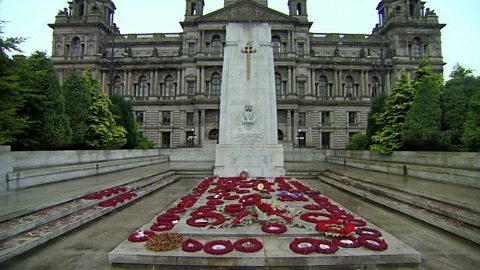Video summary
Jeremy Paxman tells us about the first battle of World War One, the Battle of Mons and private John Parr, the first British soldier killed in World War One, on August 21st 1914.
Following the outbreak of war, two thirds of BritainŌĆÖs small professional army marched across France to meet the Germans at the Belgian town of Mons.
BritainŌĆÖs small but well-trained army were quickly overcome by German numbers, and began an exhausting 13 day retreat, marching 200 miles into France.
The myth of the Angel of Mons is attributed to the utter exhaustion of the men. Government censorship prevented the defeat being reported immediately.
We see a copy of The Times newspaper from August 30th, the first to report the terrible result of the battle.
We hear quotes from the article reflecting the depth of national shock, and calls for many more soldiers to increase the ranks of the British army.
Teacher viewing recommended prior to use in class.
Teacher Notes
Key Stage 3:Pupils could listen to optimistic recruitment songs from 1914, then look for evidence of optimism in the scenes. Contrast the optimism with the reality of defeat, listing evidence of the shock of loss. Role play might work to establish empathy. One group might do it as soldiers; another as family members reading news reports._
GCSE:Pupils could write a Ministry of Defence report on the Battle. The report would try to identify why Britain lost. Other pupils could study the Defence of the Realm Act 1914 and apply its censorship provisions to a create guidelines for the reporting of this shock defeat.
National 5/ Higher:Students could examine the reasons for the British army's defeat, and discuss how this affected the public attitude to the war, and the government's response. What was the role of newspapers during the War, and how much did censorship operate? How does this compare with modern conflicts?
This clip will be relevant for teaching History. This topic appears in at KS3 in England, Wales and Northern Ireland and OCR, Edexcel, AQA and WJEC/Eduqas GCSE/KS4 in England and Wales and CCEA GCSE in Northern Ireland. It also appears in National 5 and Higher in Scotland.
How Britain declared war in WW1. video
Jeremy Paxman explores the declaration of war after Germany invaded Belgium in 1914.
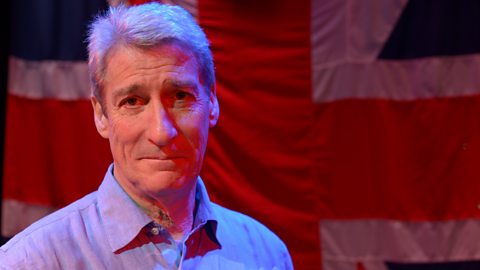
Your country needs you! video
Jeremy Paxman explains Lord Kitchener's iconic recruitment PR campaign of WW1.
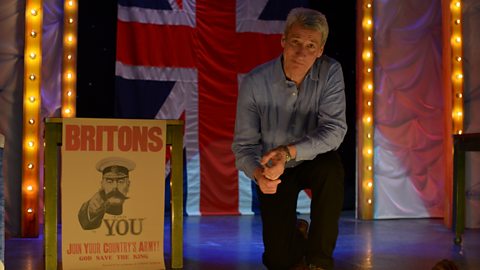
The 91╚╚▒¼ Front. video
Jeremy Paxman explains how German u-boats crippled the country and led to rationing and the 91╚╚▒¼ Front.
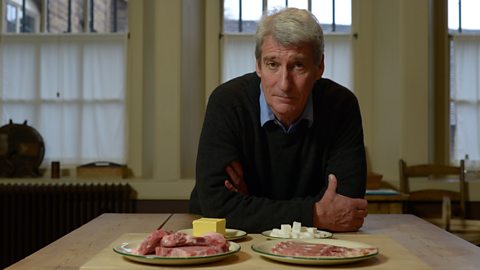
WW1 poetry and shell shock. video
Jeremy Paxman looks at the mental health problems suffered by poet Siegfried Sassoon and soldiers in the First World War.
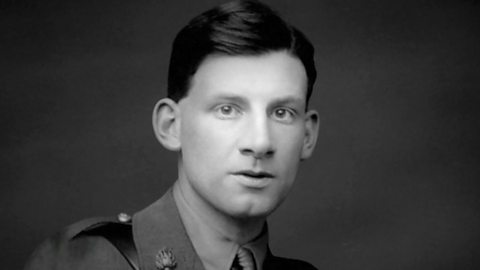
Treating Indian soldiers at Brighton Pavilion. video
Jeremy Paxman explains how a former royal residence became a hospital for injured soldiers in WW1.
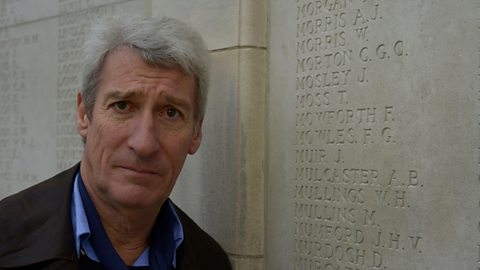
Air raids and the bombardment of Britain in WW1. video
Jeremy Paxman explains the unprecedented bombardment of Britain in World War One.
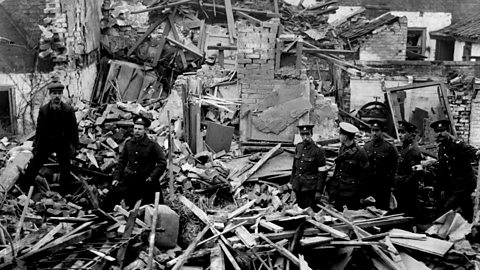
The dangerous jobs of women in WW1. video
How women entered the workforce and took up dangerous roles to support the war effort.

How the Britain turned the tide in 1918. video
How the British workforce, the 91╚╚▒¼ Front and the USA joined together to fight back against the German advance in 1918.

1918: the end of the war and Remembrance Day. video
Jeremy Paxman describes the end of the First World War.
